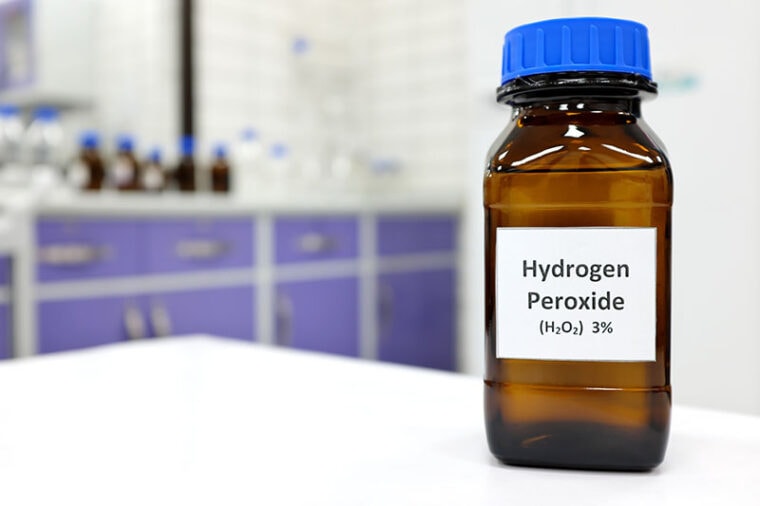
If you’re like us, your parents used to pull out hydrogen peroxide to clean out all sorts of wounds. And while hydrogen peroxide is extremely effective at killing bacteria, which can help prevent infections, that doesn’t mean you should pull it out and use it on your dog.
There are several reasons hydrogen peroxide isn’t the best choice for your pup, but the primary reason is that it can slow down the healing process. We’ll break down exactly why you shouldn’t use it here, and we’ll highlight how you should clean and treat your pup’s wound instead!
Why You Shouldn’t Use Hydrogen Peroxide on Dogs
While you likely think of hydrogen peroxide as a tool to clean out wounds and kill bacteria, the problem is that while it’s killing bacteria, it’s also killing cells that your pet’s body uses to start healing the wound naturally.
This means that by using hydrogen peroxide on wounds, you could be slowing down the healing process for your dog. Not only that but as the hydrogen peroxide works, it can be painful for your pup!
The only exception to this is if your dog’s vet specifically recommends hydrogen peroxide for a specific area or condition. However, never take this into your own hands; wait for a vet to tell you to do this before using hydrogen peroxide on any pet.
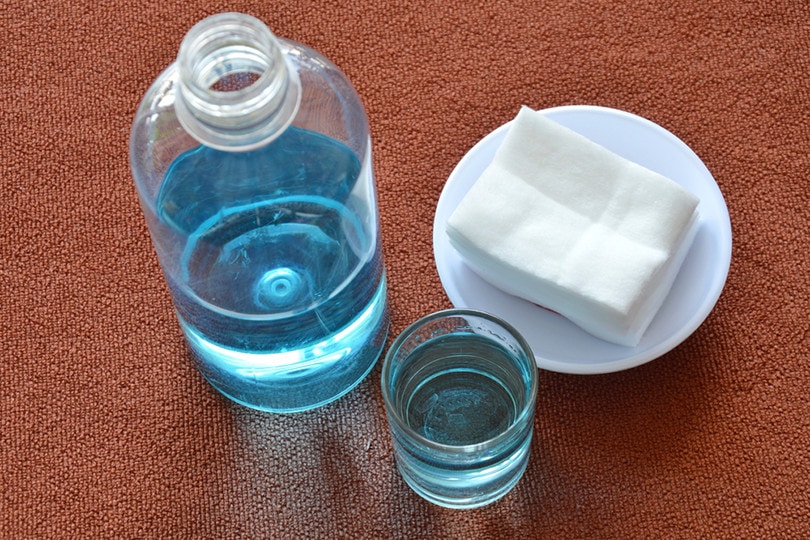
The 4 Better Options for Cleaning a Dog’s Wound
Since you shouldn’t use hydrogen peroxide on your dog’s wound, you’ll need to find a different way to clean out a wound your dog has. If your dog’s injury is large, deep or swollen then the wound should be treated by a vet. This includes bite wounds from another animal which may look small but teeth can leave deep puncture wounds under the skin. The following advice is for minor scrapes and wounds.
1. Use a Saline Wash
Instead of using hydrogen peroxide, use a simple saline solution to clean out your pet’s wound. Completely flush out the wound to remove any contaminants and leave it as alone so your dog’s body naturally heals the area.
2. Control Bleeding
Once you’ve flushed the area, it’s time to control any potential bleeding in the area. Apply pressure to the wound to help the body start the clotting process. If you can’t control the bleeding quickly, you should take them to a vet immediately.
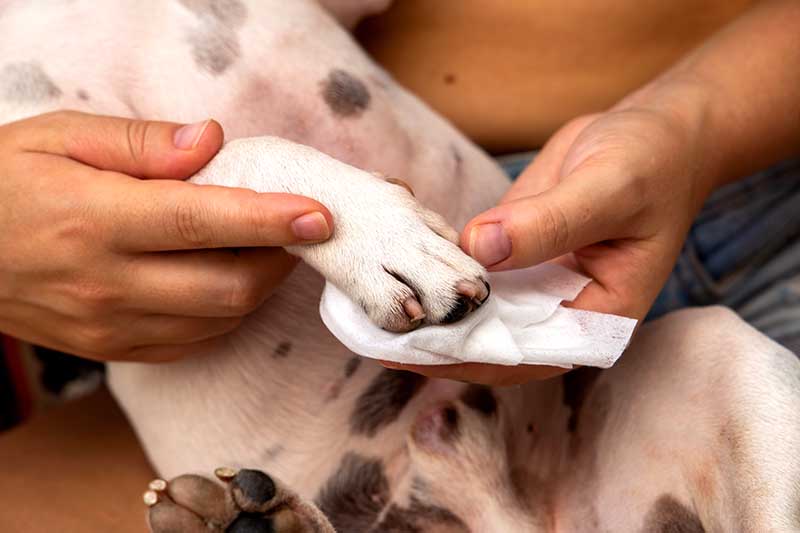
3. Wrap the Wound
Depending on where the wound is you may need a temporary wrap to protect it. This will stop it being traumatized or contaminated again, for example, if on a paw. Always make sure the wrap is not too tight as this can restrict blood flow to the area and stop healing. If you think the wound may require a bandage for a longer period of time then you should consult with your vet.
4. Prevent Licking
Whether you use the “cone of shame” or a softer option like a T-shirt, you need to keep your dog from licking the affected area. Licking wounds can delay healing by leading to infections and irritation or sores.
But your dog’s instincts don’t understand this, so if they get the chance, they’ll lick away. It’s up to you to keep them from doing so, which will help keep infection away and speed up the healing process.
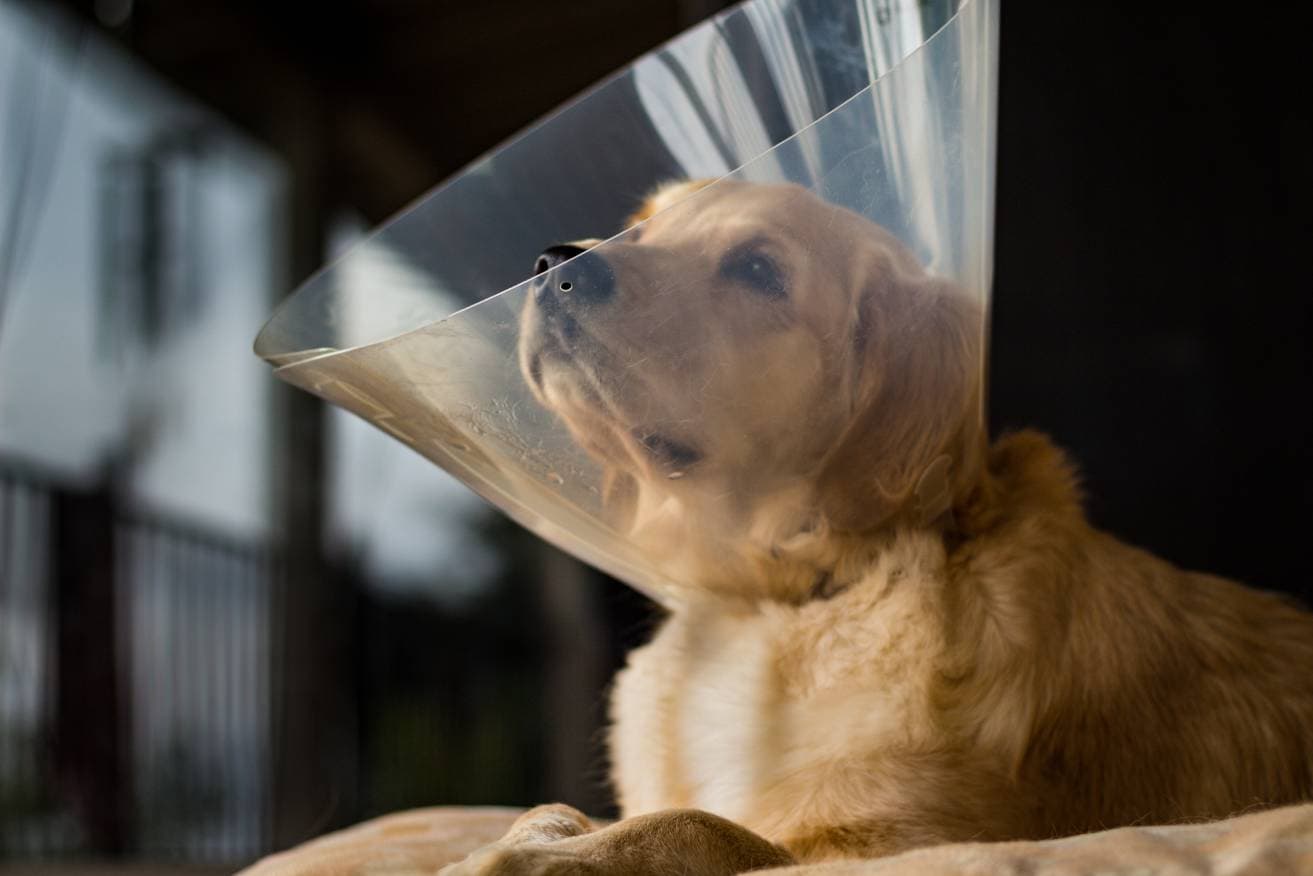
Monitoring the Healing Process
Whether you use hydrogen peroxide or saline to clean out your dog’s wound, you need to keep an eye on it throughout the entire healing process. Even when you do everything right, it’s possible for an infection to start, and if this happens, you need to take them to the vet as soon as possible.
Contact your vet if the wound has any signs of infection.
It can be normal for there to be a small amount of bleeding while cleaning out the wound or bandages, but this shouldn’t be excessive and should stop after a day or two.
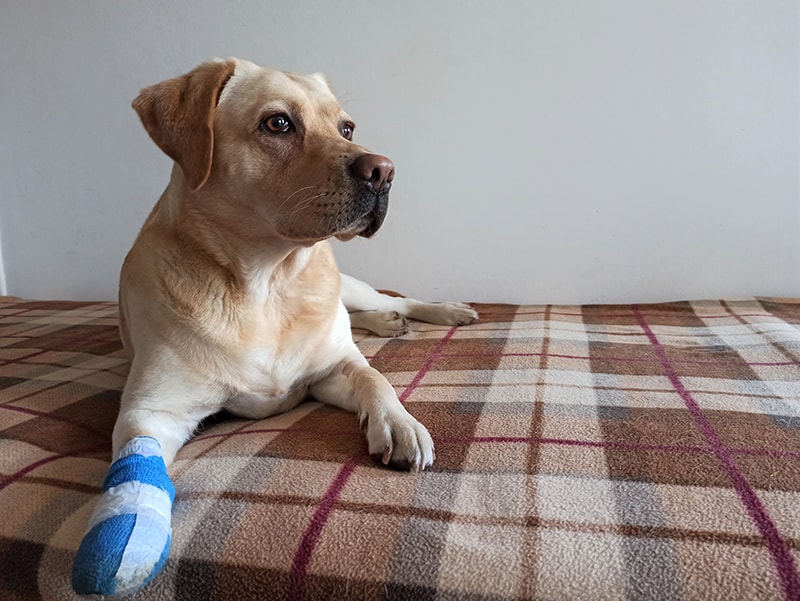
 Final Thoughts
Final Thoughts
While hydrogen peroxide might be effective at killing bacteria, unless your dog’s vet specifically instructs you to use it, you should never use hydrogen peroxide on your dog. There are simply more effective ways to clean out your dog’s wound that won’t slow down the healing process or hurt your pet.
Don’t leave anything to chance, though, and if you’re worried about a potential infection or if a cut is deep, always play it safe and take them to a vet for proper treatment.
Featured Image Credit: sulit.photos, Shutterstock






